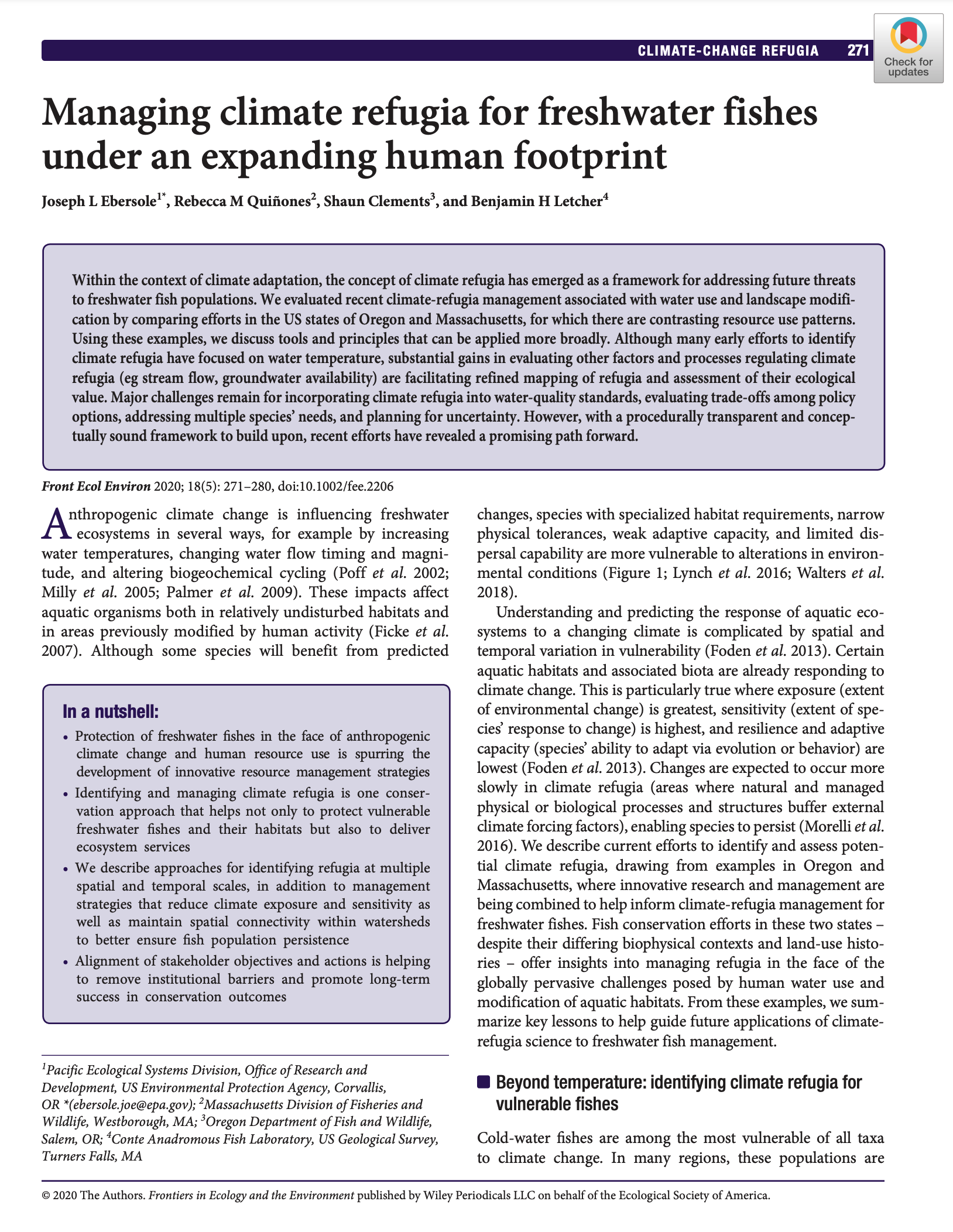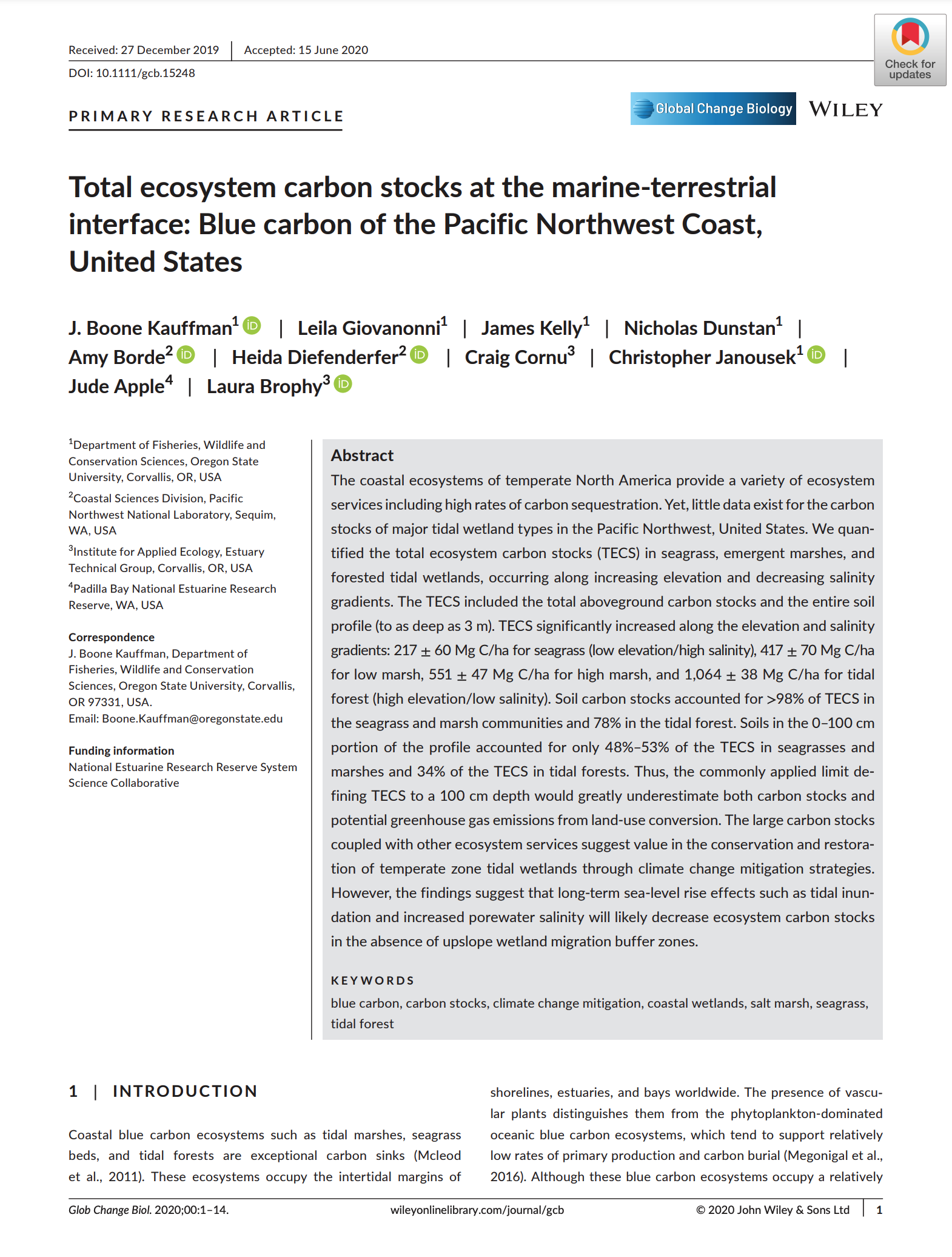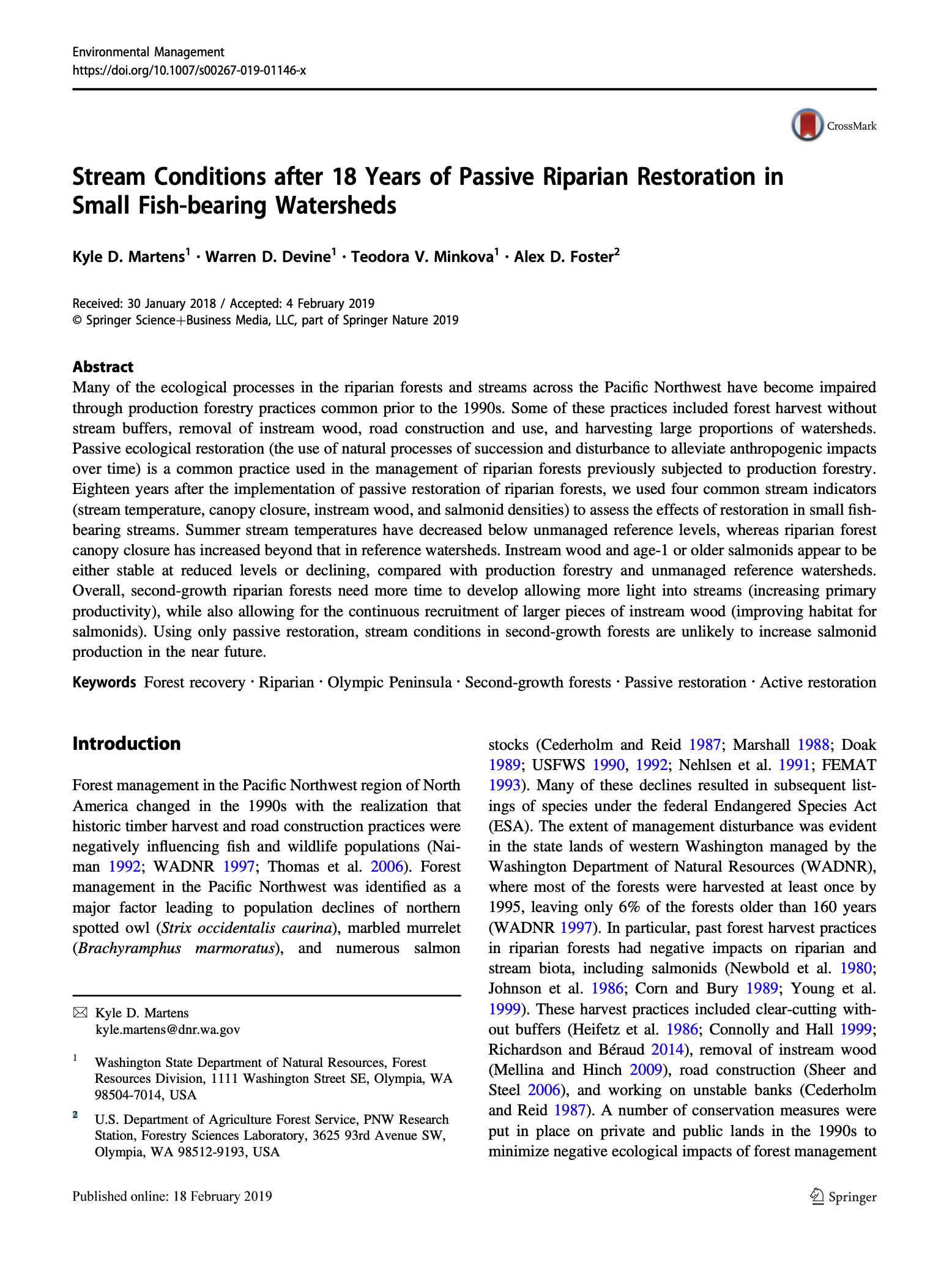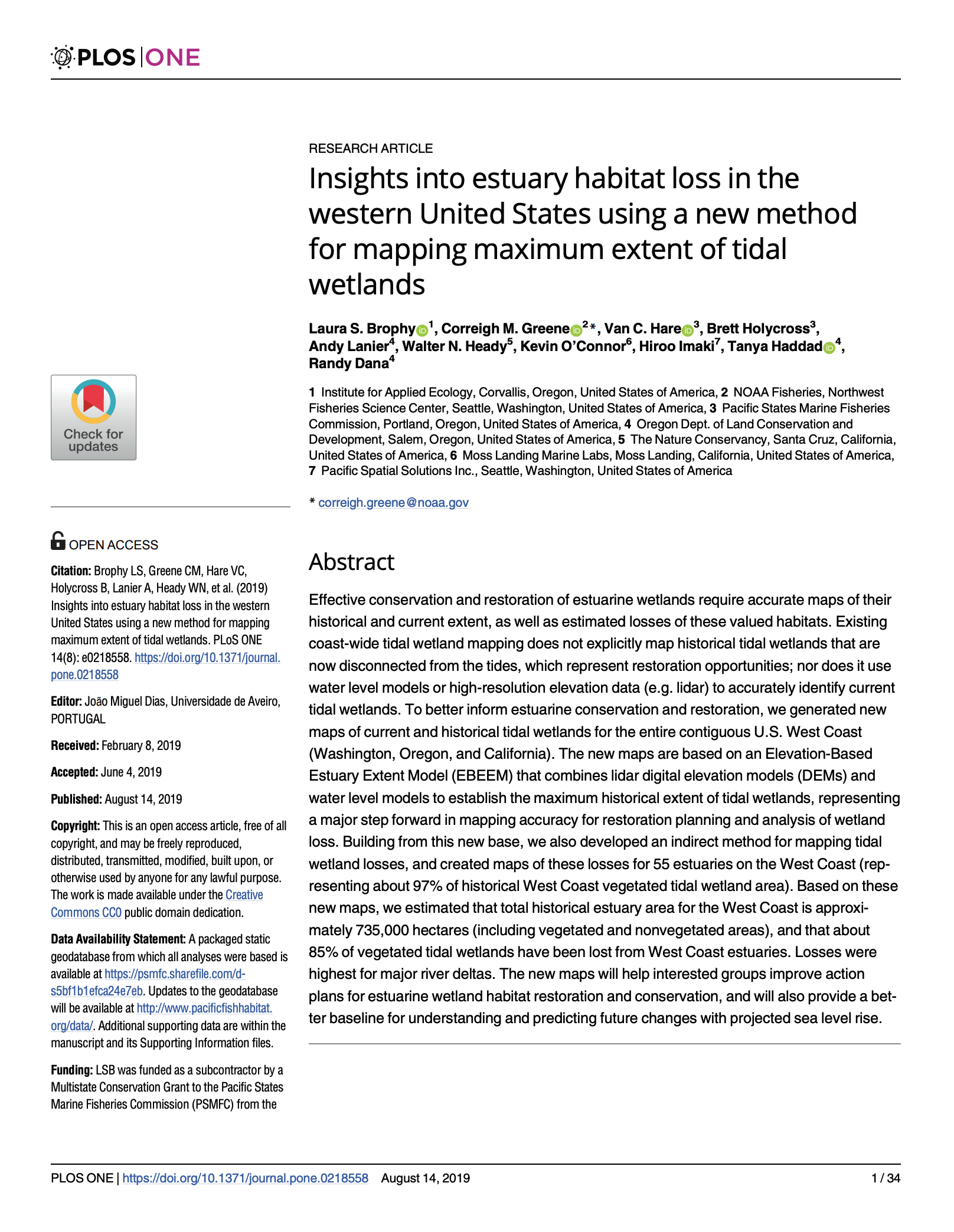Sediment Accretion Blue Carbon Burial in Tidal Saline Wetlands (Peck et al, 2020)
admin2022-06-28T13:52:02+00:00Oregon estuaries provide important opportunities to assess controls on tidal saline wetland carbon burial and sediment accretion as both rates of relative sea level rise (RSLR; −1.4 ± 0.9 to 2.8 ± 0.8 mm yr−1 ) and fluvial suspended sediment load relative to estuary area (0.23 to 17 × 103 t km−2 yr−1 ) vary along the coast. We hypothesized that vertical accretion, measured using excess 210Pb in least‐disturbed wetlands within seven Oregon estuaries, would vary with either RSLR or sediment load relative to estuary area, and carbon burial would correlate strongly to sediment accretion. Mean rates of high [...]










